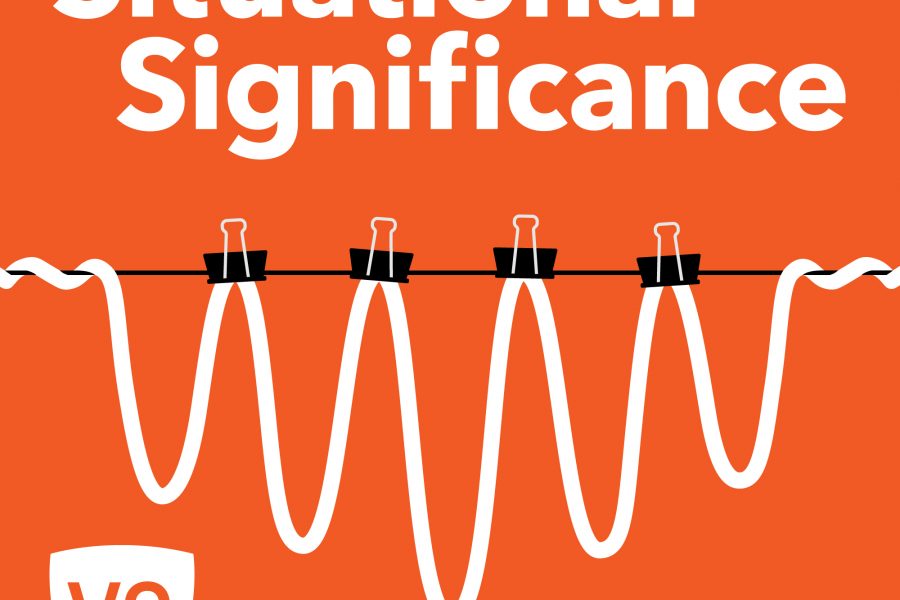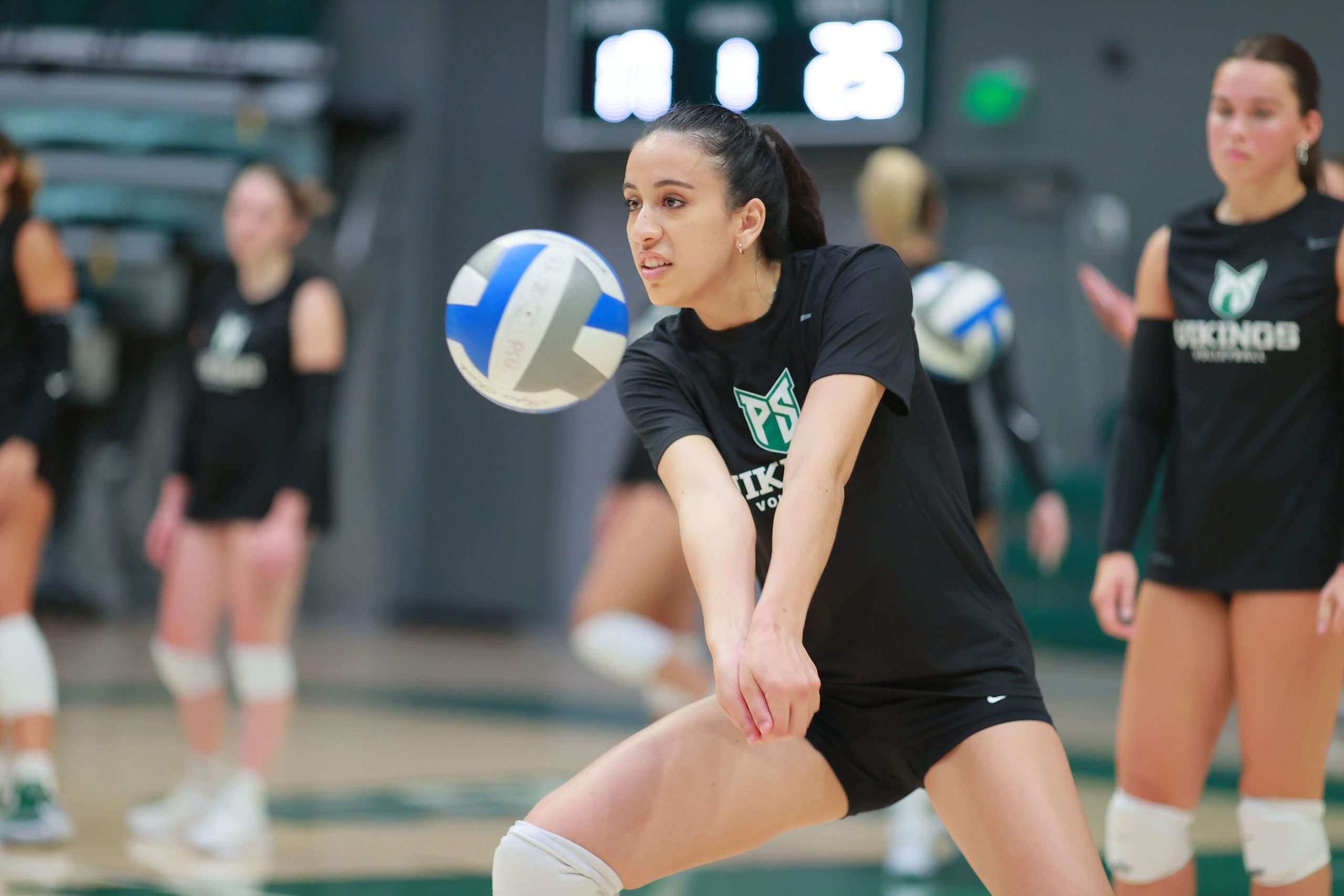AAUP faculty union contradicts claim of budget shortfall
The American Association of University Professors, a longstanding union with 1,300 faculty members fighting for academic freedom and due process for Portland State faculty, claims PSU is financially stable and has a budget surplus of $27 million.
Contrary to the AAUP’s claim, PSU Vice President of Finance and Administration Kevin Reynolds stated that declining enrollment has created a $7.8 million budget shortfall.
Reynolds announced on Nov. 13 at a Board of Trustees Finance and Administration committee meeting that each division at PSU will have to make 2% cuts to balance the budget.
The AAUP—which includes academic professionals, such as academic advisors—claimed the university is not prioritizing its resources and making unnecessary cuts instead of adjusting budget spending, and that there is no evidence for such a shortfall.
Budget surplus
Flyers are pinned to bulletin boards and taped to office windows across the PSU campus, stating there is no PSU budget crisis and there is a $27 million surplus. The flyers have a link to a spreadsheet of PSU’s financial actuals—the total revenue brought in and total expenses paid by the university—for the fiscal year 2018–19 and show an exact $26.8 million surplus.
José Padín, professor of sociology and the president of AAUP, confirmed that PSU administration is currently asking divisions for 2% budget cuts. Padín said in regard to how PSU spends its revenue, there is an “absence of clear priorities.”
PSU’s budget, actuals and other financial information is publicly available online. The public financial records as well as the AAUP document show that PSU has had a surplus for the past five fiscal years, with the largest being in the 2018–19 year.
PSU’s financial data is not explicit. In the 2018–19 actuals, $11 million went toward depreciation, a reduction in the value of an asset over time. PSU’s budget does not break down the specific costs that go toward the $11 million figure.
Dr. Howard Bunsis, professor of accounting at Eastern Michigan University, was brought in on Oct. 10 by the AAUP to give an assessment of PSU’s financial condition. Bunsis’ assessment stated depreciation is the “estimate in decline in value of [PSU’s] buildings” and does not cost the university anything.
Similarly, according to Padín, “there is no evidence that money is set aside into a fund for depreciation,” and there is no clear purpose for the $11 million.
Bunsis’s assessment also acknowledged student enrollment—tuition being PSU’s largest source of revenue—is down. However, according to Bunsis, the annual percentage of state appropriations has increased, and PSU is underestimating this revenue.
Bunsis corroborated the consecutive surpluses in his assessment. He also stated when ranked with its peers, PSU was below average in percentage of salaries for research and instruction, but was ranked the second highest in percentage of salaries for upper-level administration. Padín said this lack of research funds erodes the quality of the university.
Bunsis’ assessment is based on PSU’s own financial data, as well as the financial data of similar universities for comparison and the recording of the full assessment, can be seen at the PSU AAUP Facebook page.
Answering the question of what the financial health of PSU is, Bunsis stated “[PSU] has financial freedom and flexibility to change priorities.” Padín and the AAUP are looking for more transparency from PSU regarding the priorities of its expenditures and a cease to the cutbacks.
Despite previous consecutive surpluses, the AAUP said they are feeling pressure from PSU administration. The AAUP and PSU are currently in bargaining negotiations for a new union contract. Aaron Roussell, professor of sociology at PSU and AAUP member, said the union’s current contract expires at the end of this month.
When asked if AAUP would go on strike if a new contract didn’t go through, Padín said it was common for negotiations to go beyond the current contract and as long as they keep happening, there will be no need to strike.
Budget shortfall
PSU’s University Communications declined to comment on AAUP’s flyer itself. However, Associate Vice President of University Communications Chris Broderick said the AAUP’s numbers are “out of date” and do not reflect the summer and fall enrollment declines and subsequent impact on tuition revenue, which they state has resulted in a $7.8 million general budget shortfall for 2019.
“We have at this institution, an accelerating enrollment decline,” Reynolds said. “This year, for the first time…our net tuition revenue…is down…despite tuition increases and despite significant cost increases at this university.”
Reynolds also brought up several so-called budget misses on the Nov. 13 Board meeting that have contributed to PSU’s current budget shortfall, including a 10.4% decline in student enrollment credit hours during summer term.
“We have a tuition revenue miss from our budget from summer of one and a half million dollars,” Reynolds said. “That’s a very sizable miss in terms of our budget.”
Reynolds reported to the committee that each division—such as the College of Urban and Public Affairs and the School of Business—will entrust the responsibility of cutting a total of 2% to the vice presidents of each division. This 2% cut across divisions will account for $6 million to balance the budget, according to Interim President Stephen Percy’s budget update statement.
According to the budget update, PSU is also undertaking a two-year marketing campaign that will cost approximately $1.6 million in order to recruit new students, as well as other one-time fees such as approximately $500,000 for expanding campus public safety resources. Reynolds also acknowledged an increase in operating reserves over the last four years.
“We do at least have some expendable net assets to fight our way through the problem perhaps for the next year or two, but once it’s gone, it’s gone,” Reynolds said.
Reynolds also said that PSU’s relative financial health compared to other Oregon public universities is low, with University of Oregon and Oregon State among those that surpass PSU based on the primary reserve ratio, or expendable net assets divided by total operating expenses. He also said that PSU’s thin cash margins are worth noting when considering PSU’s financial instability.
“You could pay off all of the debt that this university has with expendable net assets, [but] you wouldn’t have anything left,” Reynolds said.
Reynolds also said previous attempts to keep the budget balanced for years to come failed, citing the tuition increase from last year as a stop-gap measure that kept the problem from getting worse.
“The only way forward is cost controls,” Reynolds said. He also said the biggest cost increases from the previous year were salaries and benefits.
“[PSU] cannot have a 2–4% decrease in enrollment and increases in salaries, wages and benefits,” Reynolds said. “It’s not sustainable.”
Broderick also said the PSU administration and AAUP are currently in negotiations on a new contract, and both sides are “hopeful to reach an agreement over faculty pay, benefits and other contractual issues” as talks continue.






